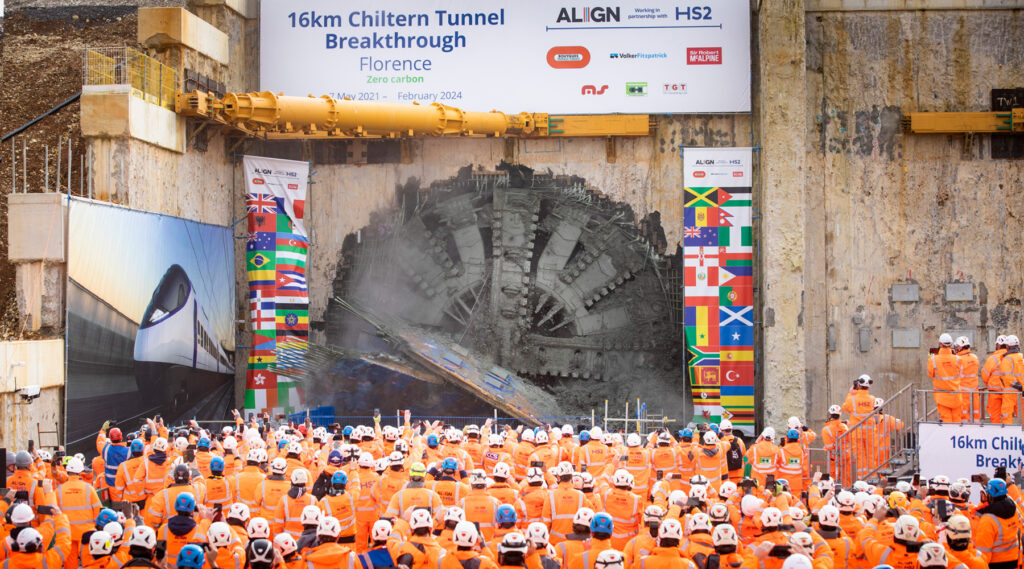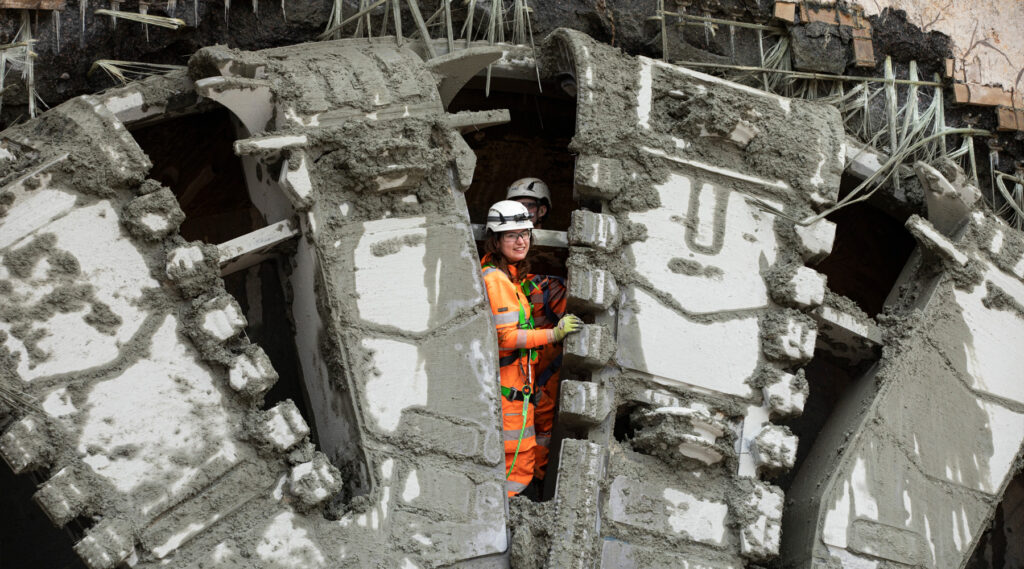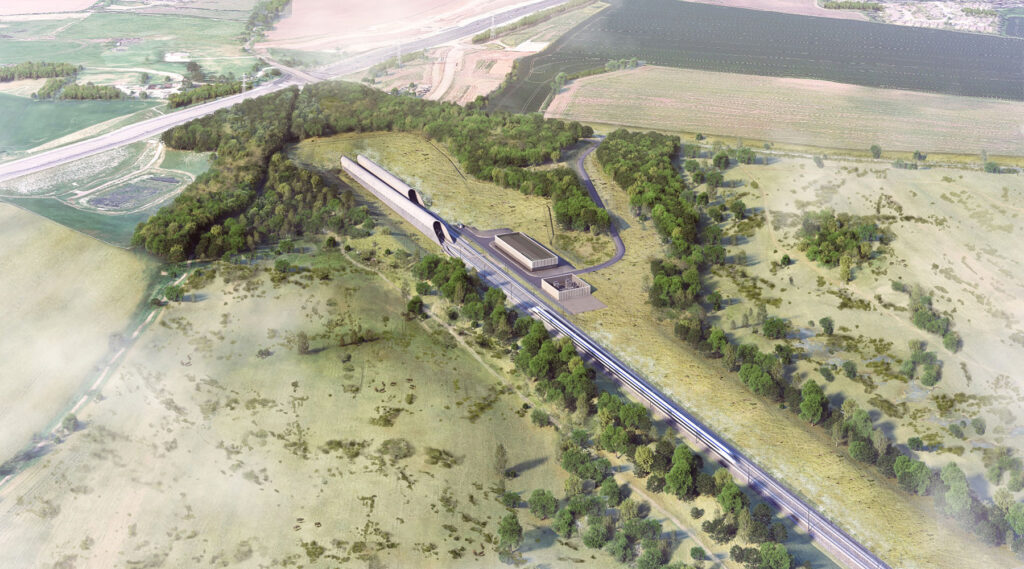HS2’s longest tunnel, running for 10 miles under the Chilterns, has been completed as the tunnel boring machine broke out of the ground to complete its long task.
The TBM, named Florence, was launched from a tunnel portal next to the M25 just under three years ago, and has been digging pretty much all day, every day, ever since. At 170 metres in length, the 2,000 tonne TBM is also the largest ever used on a UK rail project. As is traditional, all TBMs are given female names, and Florence is named after Florence Nightingale – a name suggested by local children due to her residence at nearby Claydon House in Bucks.
Two identical TBMs were used to create the twin-bore Chiltern tunnel, which stretches from HS2’s South Portal near the M25 to South Heath in Buckinghamshire. Parallel tunnels will carry north and south bound trains with a second TBM, named ‘Cecilia’, due to breakthrough in the coming weeks.
Designed specifically for the geology under the Chilterns, each TBM is an underground factory – excavating the tunnel, lining it with 56,000 pre-cast concrete segments and grouting them into place as it moves forward at an average speed of 16m per day.
Four similar TBMs are being used for the London approach tunnels, while another two will work on Birmingham’s Bromford tunnel. Preparations are also underway for the launch of two more machines to excavate the Euston tunnels.
HS2’s Executive Chairman, Sir Jon Thompson, said: “We’ve still got a lot of work to do, but historic moments like today really underline the huge amount of progress that’s been made and the fantastic engineering skills we have on the project.”
Both machines launched from the South Portal and are operated by HS2’s main works contractor, Align – a joint venture formed of three international infrastructure companies: Bouygues Travaux Publics, Sir Robert McAlpine, and VolkerFitzpatrick. The machines are made by TBM specialists Herrenknecht, in Germany.
Each TBM is operated by a crew of around 17 people, working in shifts to keep the machines running 24/7. They are supported by over 100 people on the surface, managing the logistics and maintaining the smooth progress of the tunnelling operation.
In total, more than 450 people have worked on the tunnels and in support teams on the surface over the last 3 years. This includes a dedicated team which produced 112,000 fibre-reinforced concrete tunnel wall segments at a purpose build temporary factory at the South Portal who completed their work just before Christmas – and a team processing the spoil from the tunnels.
The 3 million cubic metres of chalk and other material removed during the tunnelling is being used to rewild former monoculture farmland at the south portal, which will include 127 hectares of new landscaping, wildlife habitat and biodiverse chalk grassland.
The chalk, which is pumped back through the tunnel in a slurry mixed with water, is processed at a slurry treatment plant at the south portal site where the flint is removed and water extracted before it can be reused in landscaping. Chalk grassland – a type of calcareous grassland – is the habitat of international conservation importance mainly found on limestone and chalk valleys of south-east England and the Isle of Wight.
Lime-rich, but low in nutrients, the thin soil holds little water and heats up quickly. These conditions encourage a huge variety of smaller herbs and wildflowers and over 40 species can be found in one square metre of grassland, including some of the UK’s rarest orchids and invertebrates. Only 700 hectares of chalk grassland exist across the whole of the Chilterns AONB.










I believe that the bore was completed 3 months ahead of schedule. How often do you hear that?